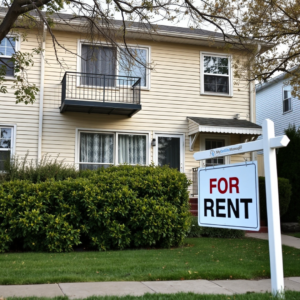In a positive shift for renters, new data reveals that the income needed to afford a typical apartment in the United States has dropped to its lowest point in three years. For the first time since early 2022, Americans earning less than $64,000 annually can now reasonably afford the median-priced rental unit—suggesting a notable turn in the housing market dynamics that have long favored rising costs over wage growth.
Affording Rent in 2025: A Closer Look at the Numbers
As of January 2025, the annual income required to afford a median-priced U.S. apartment ($1,592/month) is $63,680. This represents a 6% decline from the August 2022 peak, when renters needed to make over $67,000 per year. The improvement may seem modest at first glance, but it marks a significant milestone in affordability trends that have, until recently, been going in the opposite direction.
This shift is primarily due to three key factors: stagnant rental prices, increasing renter income, and a surge in apartment construction that has expanded the overall supply.
Renter Income on the Rise
Median renter income in the U.S. has climbed to $54,752—a 5% increase from last year and a 35% jump since 2019. With rising wages, the gap between what renters earn and what they need to afford an apartment has narrowed significantly. The current shortfall of about $8,900 is the smallest affordability gap recorded in the last five years.
This is a clear signal that for many, especially in certain metro areas, renting is becoming more feasible. However, this improved outlook is not spread evenly across the country.
Affordability Varies Widely by Metro Area
While the national trend is encouraging, location still plays a huge role in rental affordability.
-
Austin, Texas has emerged as the most affordable large metro in the country. Renters in Austin have a median income of $69,781—25% more than what’s needed to comfortably afford the area’s typical rent of $1,394 per month. This is largely thanks to a rapid increase in housing supply.
-
Houston and Dallas are also among the top metros where renters’ incomes outpace local rent requirements by 18% and 10%, respectively.
However, not all metros share this progress. In fact, some are becoming increasingly unaffordable:
-
Providence, Rhode Island, now demands the highest renter income in the U.S. at $85,800 per year, yet local renter earnings fall 41% short of this benchmark.
-
Miami, New York City, and Los Angeles continue to present affordability challenges, with income gaps between 34% and 40%.
Shifting Affordability: Who’s Gaining and Who’s Falling Behind?
Metro-level affordability is changing rapidly:
-
Austin saw the most significant affordability improvement, with the income required to rent dropping by 16% in just one year.
-
On the other hand, Providence experienced the worst decline, with required income jumping 13% from 2023, further widening the affordability gap.
These changes suggest that while national trends are improving, local markets still face deep structural disparities based on economic conditions, housing availability, and wage stagnation in certain sectors.
The Bigger Picture: What This Means for Renters and Policymakers
The current data shows a cautiously optimistic future for renters—especially in areas where housing construction has helped balance the market. But it also highlights the need for targeted policy solutions to address severe imbalances in regions like the Northeast and major coastal cities.
Efforts such as increasing affordable housing initiatives, incentivizing developers, and supporting renters through wage subsidies or housing vouchers could help bridge the affordability gap further.
Conclusion
After years of rising rents and stagnant wages, renters are finally seeing some relief. With the required income to rent now at a three-year low and median renter income steadily climbing, more Americans may soon find themselves in a better position to secure stable housing. Still, the picture remains complex—and the path toward true affordability will depend heavily on continued economic momentum and thoughtful housing policy.
Source: Renters need $63,680 to afford typical U.S. apartment, lowest in 3 years – Lesprom

